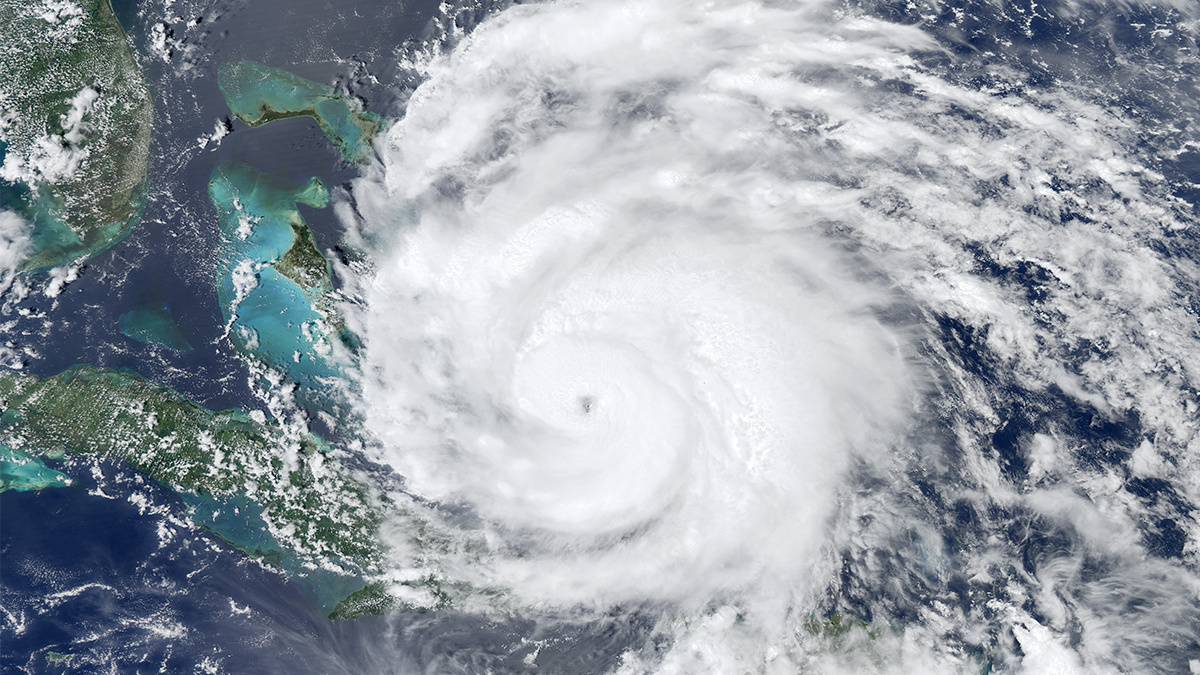
Scientists Discover ‘Stormquakes,’ Small Earthquakes Triggered by Hurricanes and Other Major Storms

Hurricane Irene caused a stormquake near Little Bahama Bank in 2011. NASA image courtesy Jeff Schmaltz, MODIS Rapid Response, NASA Goddard Space Flight Center
Powerful hurricanes and other storms can actually cause small earthquakes in the ocean, scientists have found.
“We’re calling them ‘stormquakes,'” study lead author and Florida State University (FSU) assistant professor Wenyuan Fan told Florida State University News.
How exactly does it work?
“During a storm season, hurricanes or nor’easters transfer energy into the ocean as strong ocean waves, and the waves interact with the solid earth producing intense seismic source activity,” Fan explained.
The study, published Monday in Geophysical Research Letters, documented more than 10,000 stormquakes off of Florida, the Gulf of Mexico, New England, Newfoundland, Nova Scotia and British Columbia between 2006 and 2019. The quakes can reach a magnitude of 3.5, but no one has noticed them up until now.
“This is the last thing you need to worry about,” Fan told USA Today.
The researchers themselves weren’t setting out to document them when they began their work.
“It was actually discovered by accident,” Fan told the Tampa Bay Times.
Instead, Fan and his colleagues at Woods Hole Oceanographic Institution, Scripps Institution of Oceanography and the U.S. Geological Survey were looking to trace low frequency earthquakes, according to National Geographic. They developed a method to track them by piecing together data from different regions, which is when they discovered some unusual seismic events. National Geographic explained why they were so strange:
Surprisingly, the events were seasonal, never occurring between May and August. Earthquakes that release energy from Earth’s shifting crust, however, are usually indifferent to the changing seasons. What’s more, the curious quakes radiated from both the east and west coasts of North America. Earthquakes are common out west, rumbling as the earth shifts along a spidery network of fractures in the surface, but the eastern coast largely lacks these quake-generating features.
Eventually, the researchers realized the small earthquakes took place at the same time as major storms.
Hurricane Irene, for example, caused stormquakes near Little Bahama Bank while it was a Category 3 storm near Florida, according to the Tampa Bay Times. Hurricane Ike caused stormquakes in the Gulf of Mexico in 2008 and Hurricane Bill caused several off of New England and Nova Scotia in 2009, according to Florida State University News.
But not every major storm produces stormquakes. Hurricane Sandy, one of the most expensive storms in U.S. history, did not.
The quakes seem to rely on distinct geological features, National Geographic explained. They occur in regions with broad continental shelves off the coast, which allow the waves from the stormquakes time to build on each other. They also occur in regions with ocean banks, flat underwater hills that channel the waves’ energy towards the ground.
Because of these features, Fan thinks Hurricane Michael, which devastated the Florida Panhandle in 2018, probably did cause stormquakes.
“Given the seafloor topography in the Gulf, I would expect Hurricane Michael to have generated stormquakes offshore,” he told the Tampa Bay Times.
For Fan and his fellow scientists, this paper is just the beginning of attempting to understand this newly identified phenomenon.
“This paper is laying the foundation for building up new information about how the world works,” Wendy Bohon, an earthquake geologist at the Incorporated Research Institutions for Seismology who did not participate in the study, told National Geographic.
- New seismic phenomenon discovered, named stormquakes
- How are US bridges built to withstand powerful winds, hurricanes ...
- Wildfires, Earthquakes and Hurricanes: Is All This Normal? - Video ...
- Are Hurricane Maria and the Mexico Earthquake Related? Scientists ...
- Hurricanes and earthquakes—can one predict the other?

 233k
233k  41k
41k  Subscribe
Subscribe 